by Ron Ploof | Nov 4, 2019 | Storytelling
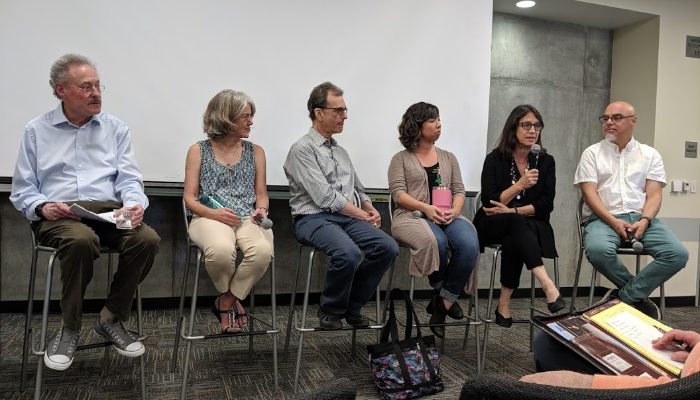
Telling Stories that Matter: Literary Journalism Workshop Panel. From left to right:
Barry Siegel, Amy DePaul, Miles Corwin, Erica Hayasaki, Amy Wilenz, and Hector Tobar.
The room was packed with over one hundred people interested in the art of storytelling–not bad for niche conference scheduled for 1:00 pm. on a hot SoCal Saturday afternoon. We’d gathered to learn about a new project from the UCI School of Humanities called the Center for Storytelling.
Professor Barry Siegel opened the event by describing the organization’s vision: to demystify the activity of writing and help the local community tell their stories. The Center for Storytelling has lofty goals, including raising $500,000 and building a Storytelling Lab, complete with recording technology and member-access to storytelling experts.
Siegel then joined a panel with five other colleagues to share their thoughts on both storytelling and writing. I’ve attempted to capture much of their storytelling wisdom.
On writers:
“Anyone who says that they love writing, probably isn’t a good writer.” Amy W.
“Writers are oddballs. Social outcasts.” Hector
“Writers are shy egomaniacs.” Miles ← the line of the day!
“I never met a great storyteller that wasn’t a big reader.” Miles
“If you steal from enough writers, you’ll develop your own style.” Hector
On becoming a better writer:
“You learn the most about writing by reading.” Barry
“To write you need nerve, will, and discipline.” Barry
“To be a storyteller, you must read stories like a writer.” Miles
“Read the masters.” Hector
“If you want to learn how to write a crime novel, read a good one and a bad one. You’ll learn more about structure from the bad one because good novels hide the mechanization.” Miles
Hector pointed to The Gettysburg Address as his benchmark for great writing: It’s short (265 words), powerful, and to the point.
On writing:
“Writing is a messy process that starts with flinging mud. Your first draft will be mud.” Barry
“It’s better to rely on excess in the first draft.” Hector
“Don’t start writing too soon.” Miles in response to question about writer’s block
Research…“If you don’t pay in the front end, you’ll pay in the backend.” Miles
“Have a schedule. I write a thousand words a day. No more. No less.” Miles
On interviewing:
“Be boring so that your subject can be interesting.” Amy W
“When interviewing a survivor, remember that they were a normal person first.” Hector
“Interviewers are like therapists that tell the world what they hear.” Hector
“Interviewing is like dating. It’s accelerated levels of intimacy.” Erica
On the impact of writing:
“When you’re reading The Silence of the Lambs and your heart starts pounding, remember that a writer did that to you.” Amy W
“People read to know what happens.” Hector
On storytelling:
“Look for moments that become scenes.” Erica
“People make stories interesting.” Miles
“People’s motivation must be on every page.” Hector
“Story begins with a world that you are interested in.” Erica
“Writing a story is a marathon. First you need to run around the block.” Hector
“Know your ending.” Hector
by Ron Ploof | Oct 20, 2019 | Business Storytelling
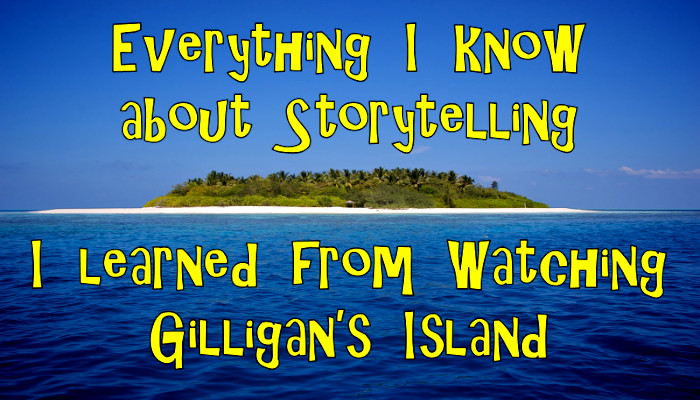
Stories are driven by great characters with unique motivations–and get interesting when those motivations clash. We see this every day in business. Before a prospect issues a purchase order, a host of characters must reconcile their motivational differences. Just think about the myriad of things that must align between you, your boss, your prospect, your prospect’s boss, and a collection of others, including competitors, investors, and vendors before any transaction.
The best business people understand what storytellers have known for ages: the best way to predict behavior is to understand what people want. Therefore, when storytellers create characters, they ask a simple question: “What do they want and why do they want it? By understanding what and why, storytellers establish guidelines for how characters react within specific situations.
Consider two famous characters: Detective Columbo (TV series) and Inspector Clouseau (The Pink Panther movies). Both Columbo and Clouseau are police detectives who want to solve a mystery, but each is motivated differently. Columbo pretends to be a bumbling detective, while Inspector Clouseau is a bumbling detective. Columbo solves his cases by staying one step ahead of his adversaries, while Inspector Clouseau stumbles into the truth through the hijinks of his ineptitude. Two characters with the same goal yet different motivations results in vastly different results. It’s all about the motivations.
So, how do you create a great characters that connect with audiences across generations? By studying successful ones. So let’s analyze Gilligan’s Island using the StoryHow™PitchDeck (SHPD).
Gilligan’s Island
Gilligan’s Island was a low-budget, campy sitcom filmed in the mid 1960s. Although it only ran for three seasons, it’s still in syndication today–more than fifty years later. Why? Because of the special ingredients that its writers tossed into their storytelling cauldron.
Just sit right back and you’ll hear a tale…
The song in the show’s opening title sequence describes four storytelling components: the Backstory (SHPD #30), Initial Impulse (SHPD #16), Setting (SHPD #6) and the castaways’ common motivation (SHPD #40 Throughline) to get back home.
Just sit right back and you’ll hear a tale, a tale of a fateful trip,
That started from this tropic port, aboard this tiny ship.
The mate was a mighty sailing man, the skipper brave and sure,
Five passengers set sail that day, on a three-hour tour,
A three-hour tour.
The weather started getting rough, the tiny ship was tossed,
If not for the courage of the fearless crew the Minnow would be lost,
The Minnow would be lost.
The ship set ground on the shore of this uncharted desert isle,
With Gilligan, the Skipper too,
The millionaire and his wife,
The movie star, Professor and Mary Ann,
Here on Gilligan’s Isle.
Minor Characters
Experienced storytellers know that good Minor Characters (SHPD #4) make better major characters.
The Island establishes the story’s Setting (SHPD #6), restricting the characters to one location. It’s the Catalyst (SHPD #9) that creates the Challenges (SHPD #53) of living in a benevolent prison–one that restricts castaway movements while simultaneously protecting them (SHPD #14) from the elements.
The Pacific Ocean is the castaway’s common foe and thus, Antagonist (SHPD #3). It’s the largest obstacle between them and their common goal: home.
The SS. Minnow is a Symbol (SHPD #57) of the castaway’s predicament. Just seeing it in the background reminds us that the castaways are trapped.
The Radio keeps the castaways connected to the outside by providing them with external Knowledge (SHPD #41).
The castaways use Coconuts for everything like: drinking cups, water-powered machines, the Professor’s experiments, and let’s not forget about Coconut Cream Pie.
Major Characters
The most important part of character development is determining what each character wants. This single piece of information drives all of their actions.
Jonas Grumby (The Skipper) wants to take care of the castaways. As their Captain, he’s driven by an Obligation (SHPD #34) to act as their Protector (SHPD #14). The Skipper’s Fatal Flaw (SHPD #11) is his inability to remain calm when Gilligan inevitably fouls something up. He is the Mirror (SHPD #7) to Gilligan.
Gilligan, the first mate, always wants to do the right thing, yet his good intentions frequently result in mayhem. His Superpower (SHPD #12) rests in his physical abilities to do things that the other castaways can’t, like run, jump, and climb coconut trees. Gilligan has two Fatal Flaws (11): he doesn’t think through his actions and Coconut Cream Pies are his kryptonite. Gilligan is the Mirror (SHPD #7) to the Skipper.
Thurston Howell III (Mr. Howell) wants to be the castaway’s leader because of his status on the mainland. He fails to understand that his money and status have no bearing on a deserted island. He’s a snob on the outside and a marshmallow on the inside. Even though his actions are Ironic (SHPD #56), he’s a respected elder and sometimes Mentor (SHPD #13).
Eunice “Lovey” Howell (Mrs.Howell) always wants to bring class to island activities. Her Fatal Flaw (SHPD # 11) is her inability to understand the actions of her working-class island mates. She is warmhearted and frequently comforts Mr. Howell when things inevitably don’t go his way.
Mary Ann Summers is a sweet, Kansas farm girl who wants to help everyone. Her most appealing attribute, her innocence, is also her Fatal Flaw (SHPD #11) because people can take advantage of her. She is the Mirror (SHPD #7) to Ginger.
Ginger Grant is an actress who wants to be the center of attention. Like the Howells, she’s used to getting her way. Ginger’s Superpower (SHPD # 12) is her ability to wrap the male Castaways around her little finger, while her Fatal Flaw (SHPD #11) is her inability to connect with people. Her Mirror (SHPD #7) is Mary Ann.
Roy Hinkley (The Professor) wants to solve all of the castaway’s problems. Whether it be finding a way off the island, making appliances out of bamboo, or recharging the radio’s batteries with coconut milk, the Professor is always trying to make life better for the castaways. His two Super Powers (SHPD #12) are Knowledge (SHPD #41) and Logical Choice (SHPD #33). His non-emotional way of attacking problems plays Mirror (SHPD #7) to the Skipper’s emotional reactions.
Episodes
Since Gilligan’s Island is a serial sitcom, the castaways can never leave the island. Therefore, each episode consists of a series of Recurring Events (SHPD #18) in the castaway’s common goal to get off the island. A typical episode involves the writers pumping the castaways with hope, and just when it looks like they’ll be rescued, one of Gilligan’s well-meaning actions scuttles the plan with a Setback (SHPD #23).
Final Thoughts
Gilligan’s Island is one of the most popular television series in broadcast history. But why? Was it the production value? Nope. The first season was filmed in black & white. Did it have the best writing? Nope. You could drive a truck through some of the holes in its Plot Points (SHPD #19). So, if the show suffered from such basic flaws, how did it enjoy so much success?
I have a few thoughts. First, it contains the raw ingredients of a good story: an odd collection of strong characters restricted to interact a tiny social microcosm. Add the fact that these characters were so relatable, we willingly suspend our belief to look past some of the plot-line inconsistencies. Lastly, and I think this is the most important one, we know theses characters by a single name. Just hearing someone talk about the Skipper, Gilligan, Mr. and Mrs. Howell, Mary Ann, Ginger, or the Professor, brings fond memories and make us smile.
Do you want to write a great story? Then create characters with a diverse set of wants. Ask, “What do they want and why do they want it?” Finally, put those characters into a situation, step back, and watch what happens. It worked for Gilligan’s Island and it might just work for you.
Photo Credit: Deserted Island by Mrs eNil through an Attribution-NonCommercial-NoDerivs 2.0 Generic (CC BY-NC-ND 2.0) license.
by Ron Ploof | Oct 6, 2019 | Storytelling
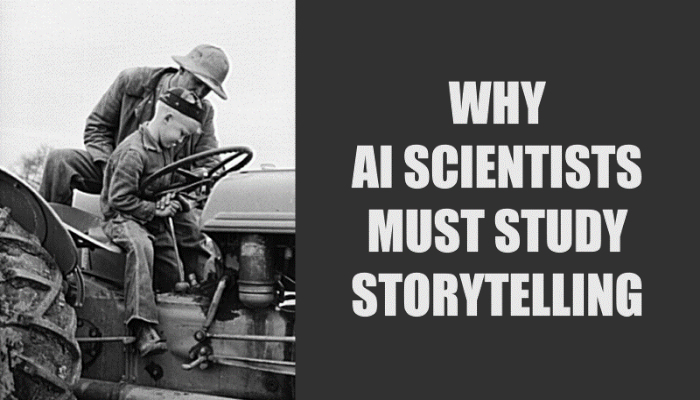
Facebook can identify you in a photograph. Shazam can name the song and artist that’s playing on your radio. An autonomous vehicle can identify and track multiple object (signs, traffic signals, vehicles, and pedestrians) all at speeds faster than humans. At first glance, these Artificial Intelligence (AI) applications seem awe inspiring. Surely, they’ll be taking over the world soon, right?
#NotSoFast
Why? Because they have nothing to do with human intelligence. AI applications perform their magic through training deep neural networks (DNNs)–highly interconnected, matrix-math-intensive models that can only do one thing well, such as identifying a face in a crowd, the name of a song, or a person in a crosswalk. And while data scientists describe these DNN architectures using human brain terminology like neurons, connections, training and inference, there’s little overlap with how people process information. Just consider that the human brain only consumes the power of a 20 watt lightbulb, while the energy required to train a single DNN gobbles up enough energy to run five cars over their lifetime–including the corresponding carbon footprint it leaves behind.
If power consumption doesn’t convince you that AI and human brains function differently, let’s look at each from the perspective of robustness. DNNs are fragile. A DNN that’s only trained to recognize the studio recording of Earth, Wind & Fire’s September wouldn’t be able to identify the same song performed by EW&F live. Yet, the ability for humans to identify songs is infinitely more robust. Once we hear a familiar song, we have the broad capability to recognize multiple versions of it. For example, if your friend picked up a guitar and started playing September, not only would those who knew the song be able to recognize it–independent of both key or tempo–they’d also be able to sing along.
Deep learning has tremendous advantages over humans when it comes to the processing large amounts of data, but, if those calculations ever hope to approximate the robustness of the human brain, AI scientists will need to change their perspective. The authors of the academic paper, Neuroscience-Inspired Artificial Intelligence explain the magnitude of the gap succinctly.
“Human cognition is distinguished by its ability to rapidly learn about new concepts from only a handful of examples, leveraging prior knowledge to enable flexible inductive inferences.” Pp 259
Human intelligence is built upon interacting with the environment around us. We gather information through our five senses, compare that information with prior knowledge, and determine the best course of action. We react to new situations through an age-old series:
- assess fatal threats.
- Once those are eliminated, we seek to increase pleasure and avoid pain.
And while step #2 mimics the supervised learning (carrot and stick) techniques used to train DNNs, the stakes associated with being right or wrong are infinitely more important to a living and breathing human. Until AI applications can incorporate human emotion into their models, machine intelligence will forever remain limited.
DNNs are handicapped by a fundamental flaw–they neglect the most important part of human intelligence: the human condition. AI Scientists understand these limitations and are looking to other disciplines for inspiration. They’re looking to neuroscience and psychology to close the gap. But rather than looking at human intelligence holistically, they pursue algorithmic solutions from a bottom-up perspective. The best way for data scientists to find the robustness of the human brain is to look at their experiments through the eyes of a storyteller.
A story is the result of people pursuing what they want…and we all want to remain living. It’s Maslow’s hierarchy of needs. We must satisfy both our physiological and safety needs before anything else. We can’t worry about the future until we’re confident that we can survive the present.
This fundamental need drives our actions. Instinct alerts us to mortal threats. Our attention is drawn to things that defy our expectations. Our most vivid memories are based on experiential differences (first/last, hottest/coldest, happiest/saddest) while our ability to bond with other humans is built upon shared experiences.
Humans have a superpower–the ability to react appropriately to situations that we’ve never experienced before. Therefore, if achieving the robustness of human intelligence is truly the goal, then AI scientists must expand the scope of their exploration beyond the disciplines of pure logic and seek the counsel of storytellers. Storytellers study human nature–the actions of autonomous beings as they journey through the great game of life. They study these actions in the context of the environments that people live in. They understand how people assess a situation/thing/idea, create hypotheses, test those hypotheses, and then act based on what they learned. And all of those actions depend on the human capacity to trade risks and rewards, as they experience profoundly complex concepts such as love, hate, fear, or exhilaration.
Until DNNs can incorporate these complex concepts, their relative intelligence will continue to remain artificial.
AI Scientists, meet the storytellers. Storytellers, meet the AI scientists.
Photo Credit: Lee, Russell, photographer. Tulare County, California. Farmer teaching his six-year old son to drive his tractor. California Tulare County Tulare County. United States, 1942. Feb. Photograph. https://www.loc.gov/item/2017817214/.
by Ron Ploof | Aug 25, 2019 | Storytelling
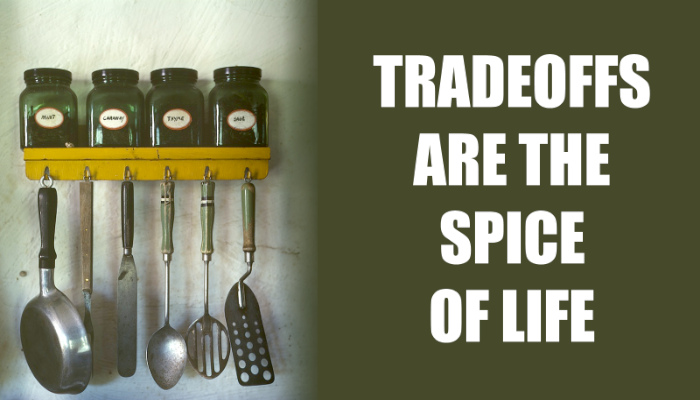
Most marketing stories are written as fairy tales, complete with their happily ever after endings. But, that isn’t life, is it?
In reality, life is a series of messy choices. While we’d prefer clean distinctions between right and wrong, frequently we’re asked to choose between bad and worse, also known as the lesser of two evils.
Business, as in life, is a series of nuanced tradeoffs. We’re constantly trading between a project’s schedule and its budget. Or, consider the freemium business model that offers customers a choice between time and money–built on the premise that young customers have more time than money and older customers have more money than time. Those with more time than money are willing to trade advertisement interruptions for free access to content, while those with more money than time are willing to pay for unencumbered access to it.
People make the right choices for the wrong reasons, the wrong choices for the right reasons, and everywhere in between. They’ll sacrifice today for something greater tomorrow, or choose to risk the longer term consequences of instant gratification. Sometimes their major decisions have minor effects, while seemingly minor decisions prove to have major effects.
Consider some of the most common tradeoffs in life:
- Saving for tomorrow means not spending today
- Choosing the devil you know is sometimes safer than the devil you don’t
- Saving someone from a fire means risking burns
- Losing the battle might set you up to win the war
- Pushing through the pain helps you recover from injury
- Taking one for the team contributes to a win
- Working two jobs to accelerate saving for a downpayment
- Laying off a few workers to save the rest
Tradeoffs are the spice of life. Identifying them leads to stories that audiences relate.
So, what are some of yours? Which tradeoffs do your customers make every day?
Photo Credit: Siegel, Arthur S, photographer. Birmingham near Detroit, Michigan. Kitchen utensils hanging below a spice rack with mint, caraway, thyme, and sage jars. United States, 1942. [July] Photograph. https://www.loc.gov/item/2017878892/.
by Ron Ploof | Aug 18, 2019 | Storytelling
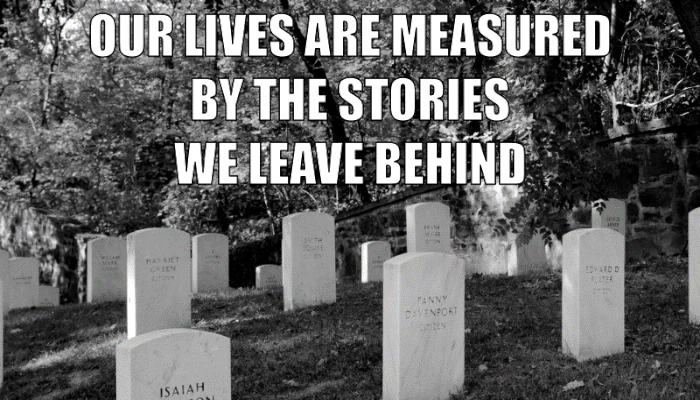
My friend Mike died last month. He was sixty-five.
We reconnected about two years ago through a chance meeting at Mineta San Jose International airport. We started catching up at the Santa Cruz Wine Bar in Terminal B (Mike loved red blends) and continued the conversation on our flight back to Orange County. We talked nonstop, making it feel like one of the shortest one-hour flights I’ve ever experienced.
At this point you’re probably wondering, what does this post have to do with business storytelling? Truthfully? Nothing..and everything…because after attending my third funeral in as many months, I’m feeling a bit introspective and have come to a conclusion:
The true value of one’s life is measured by the stories that people remember after you’re gone.
And so, rather than talking about business storytelling this week, I want to share my favorite Mike story with you.
* * *
First, you need to know that Mike was a very large human being–something like 6’ 9” and pushing to 300 lbs.
One day, Mike found himself jammed into a commercial airline seat on a long flight. He needed to stretch, so he walked to the back of the plane.
“I apologize,” he said to the stewardess with his Arkansas accent. “I know I’m not supposed to be standing here, but that tiny seat is killing my knees and I just need to stretch for a while.”
The stewardess smiled. “You can stand here for as long as you need,” she said.
A few minutes later, Mike noticed an elderly couple that kept looking back at him. That’s when the woman got up and approached. “My husband and I feel so safe with you here,” she said. “Thank you for your service.” As she returned to her seat, the old man flashed Mike a thumbs-up sign.
Mike flagged down the stewardess to get her advice on the strange interaction. “I’m not sure, but I think that couple over there thinks I’m an Air Marshall or something. Should we tell them?”
“No,” she said, gesturing toward a man seated mid-cabin. “You see that guy up there?”
Mike locked eyes with a timid-looking, shell-of-a-man. “Yeah?”
“He’s been nothing but trouble. But, I just pointed at you and said, ‘Now, do I need to have him come over here?’”
* * *
I’ll miss Mike’s wisdom, big heart, and massive hugs. But most of all, I’ll miss his stories: the adventures of running a Medical Devices company, how he sold bags filled with rattlesnakes to make pocket money as a kid, and the tale of an epic basketball battle between him and his Olympian/NBA center brother.
Our lives are measured by the stories we leave behind. What stories will people tell about you?
Photo Credit: Highsmith, Carol M, photographer. Headstones at Arlington National Cemetery, Arlington, Virginia. Arlington United States Virginia, None. [Between 1980 and 2006] Photograph. https://www.loc.gov/item/2011635737/.




